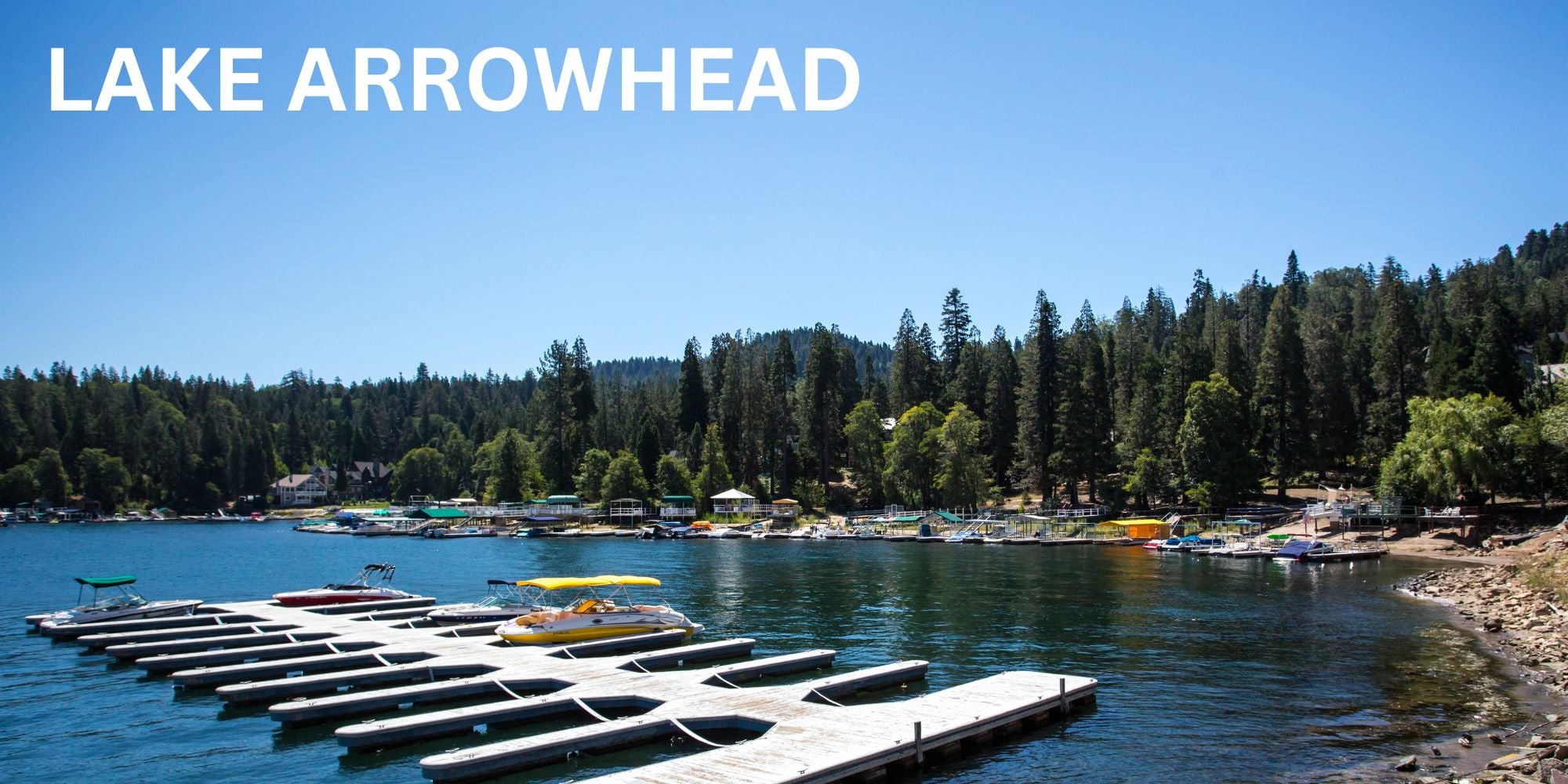
Lake Arrowhead, nestled in the breathtaking San Bernardino Mountains of Southern California, is a haven for nature enthusiasts but comes with the challenge of high altitudes. Discover in this guide everything you need to know about Lake Arrowhead altitude and our best tips to avoid Lake Arrowhead altitude sickness.
The altitude of Lake Arrowhead sits at 5,174 feet above sea level. Located in San Bernardino Mountains of Southern California, Lake Arrowhead is comparable to the elevation of other notable cities like Denver at 5,280 feet high.
The premier ski resort closest to Lake Arrowhead is Snow Valley Mountain Resort, which climbs to 7,841 feet at the summit.
With the altitude of Lake Arrowhead and its surrounding areas, it is significantly higher than its nearby cities at sea level such as Los Angeles and San Diego. You'll want to be well prepared for these elevations.
Yes, Lake Arrowhead California is considered high altitude.
Mountain medicine categories high altitude as anything beyond 4,900 feet,² which would include Lake Arrowhead.
Yes, you can get altitude sickness at Lake Arrowhead.
While some state altitude sickness begins at 6,000-8,000 feet high, Julian Klapowitz MD notes that it can start as low as 4,000 feet.³ We find that statement accurate, as in Denver at 5,280 feet many visitors experience altitude sickness.
Based on barometric pressures, it's estimated that oxygen level in Lake Arrowhead is around 14% lower than found at sea level.⁴
Lake Arrowhead altitude sickness happens from the decreased oxygen levels found at 5,174 feet high.
Especially when coming from sea level, like Los Angeles and San Diego, your body doesn't have sufficient time to acclimatize. This can leads to altitude sickness with physiological struggles including oxidative stress and dehydration.
It's essential to be aware of the symptoms of Lake Arrowhead altitude sickness, also known as Acute Mountain Sickness (AMS).
With stunning natural beauty and recreational activities, Lake Arrowhead also comes with altitude sickness risk which commonly include headaches and fatigue.
Here's are the key Lake Arrowhead altitude sickness symptoms to watch out for:
These symptoms can vary in severity, and often start to occur within the first 12 to 24 hours. Following our high altitude tips below to have a better experience at Lake Arrowhead.
Two of the most popular mountain lakes in the San Bernardino Mountains California are Lake Arrowhead and Big Bear Lake, which are only about 25 miles apart.
While also a ski resort with higher elevations, Big Bear Lake stands at 6,752 feet high, exceeding the height of Lake Arrowhead. In addition if skiing or hiking, the Big Bear ski resort jumps to 8,805 feet high.
Let's compare their elevations:
The intensity and risk of altitude sickness at Big Bear can be slightly higher than Lake Arrowhead.
To ensure a memorable trip to Lake Arrowhead without the discomfort, we've outlined the following expert tips below. As a company with over a decade of high-altitude experience, we'll share the best knowledge available.
Here's 5 Tips To Avoid Lake Arrowhead Altitude Sickness:
During your visit to the beautiful Lake Arrowhead you can have a better experience by avoiding Lake Arrowhead altitude sickness. Follow these tips when you arrive, including staying hydrated, light physical activity only, getting plenty of sleep, limiting alcohol, and replenishing antioxidants.

Elevate your adventures with peak performance using Zaca's chewables. Our proprietary blend of herbs and antioxidants aids in rapid recovery and hydration, so you can bounce back faster. These chewables are formulated with superior antioxidants including glutathione to boost the body's ability to fight oxidative stress. Made in travel-friendly packets, Zaca is convenient take anywhere – whether you're skiing, hiking, or flying. Simply take 2-4 chewables a day or as needed. Try Zaca's chewable supplement today and fuel your next epic journey.
SOURCES:
1. Lake Arrowhead Elevation
https://en.wikipedia.org/wiki/Lake_Arrowhead,_California
2. Effects of high altitude on humans
https://en.wikipedia.org/wiki/Effects_of_high_altitude_on_humans
3. High Altitude Illness
https://www.travelsurenyc.com/high-altitude-illness/
4. Oxygen Levels at Altitude
https://wildsafe.org/resources/ask-the-experts/altitude-safety-101/oxygen-levels/
5. Snow Valley Mountain Resort Elevation
https://en.wikipedia.org/wiki/Snow_Valley_Mountain_Resort
6. Why Do You Need to Drink a Lot of Water at a High Altitude?
https://www.livestrong.com/article/360485-how-to-train-for-high-altitude-hiking
7. Sleep: The Secret Ingredient of Injury Recovery
https://www.orthocarolina.com/media/sleep-the-secret-ingredient-of-injury-recovery
8. Effects of Alcohol
https://www.ahajournals.org/doi/full/10.1161/01.HYP.29.6.1278#
9. High altitude and oxidative stress
https://pubmed.ncbi.nlm.nih.gov/17482529/
10. Effect of high altitude (7,620 m) exposure on glutathione
https://pubmed.ncbi.nlm.nih.gov/11320641/
11. Oxidative Stress and Diseases Associated with High-Altitude Exposure
https://www.ncbi.nlm.nih.gov/pmc/articles/PMC8868315/
12. Lake Arrowhead Resort and Spa Altitude
https://www.lakearrowheadresort.com/location_directions/
Copy the coupon code & use it at checkout